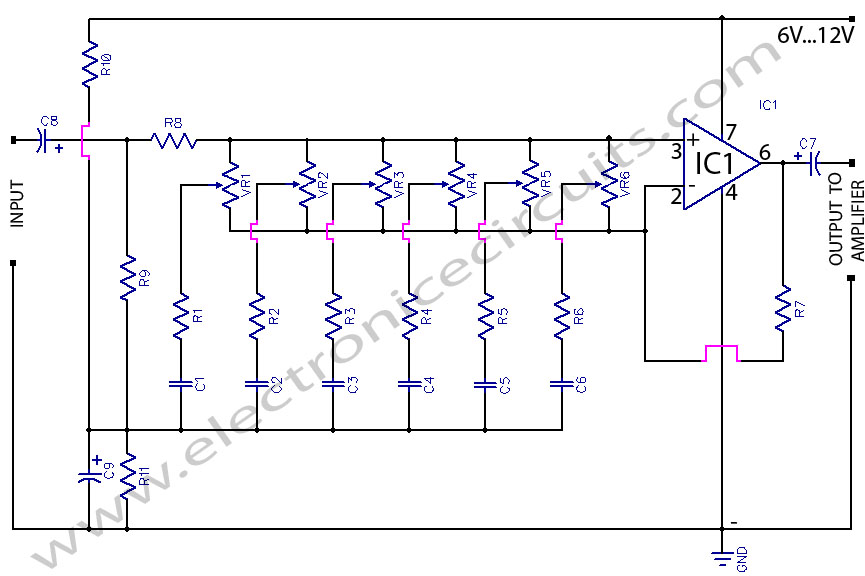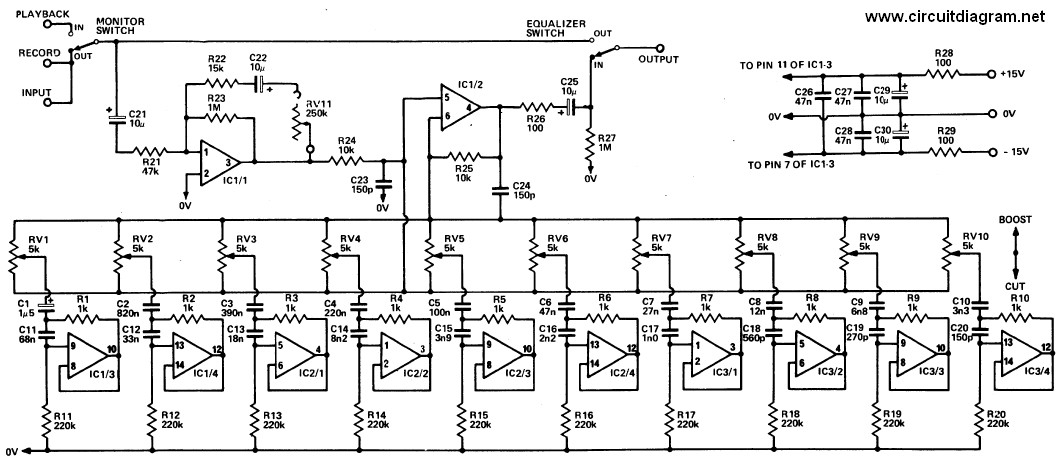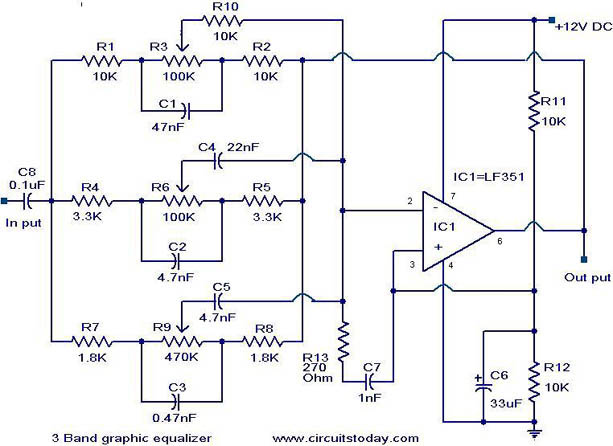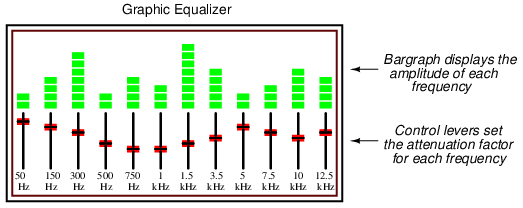I used online filter calculator to find the value of each Hz filter for 6 channel mixer to match my hearing test to build a hearing aid. Each filter needs a volume continue but I have no clue where 6 volume controls should be without screwing up each filter?
**broken link removed**
**broken link removed**




![B]](https://www.eleccircuit.com/wp-content/uploads/2010/12/5-channel-graphic-equalizer-by-bc548-transistor.jpg[/lmg][/B])


